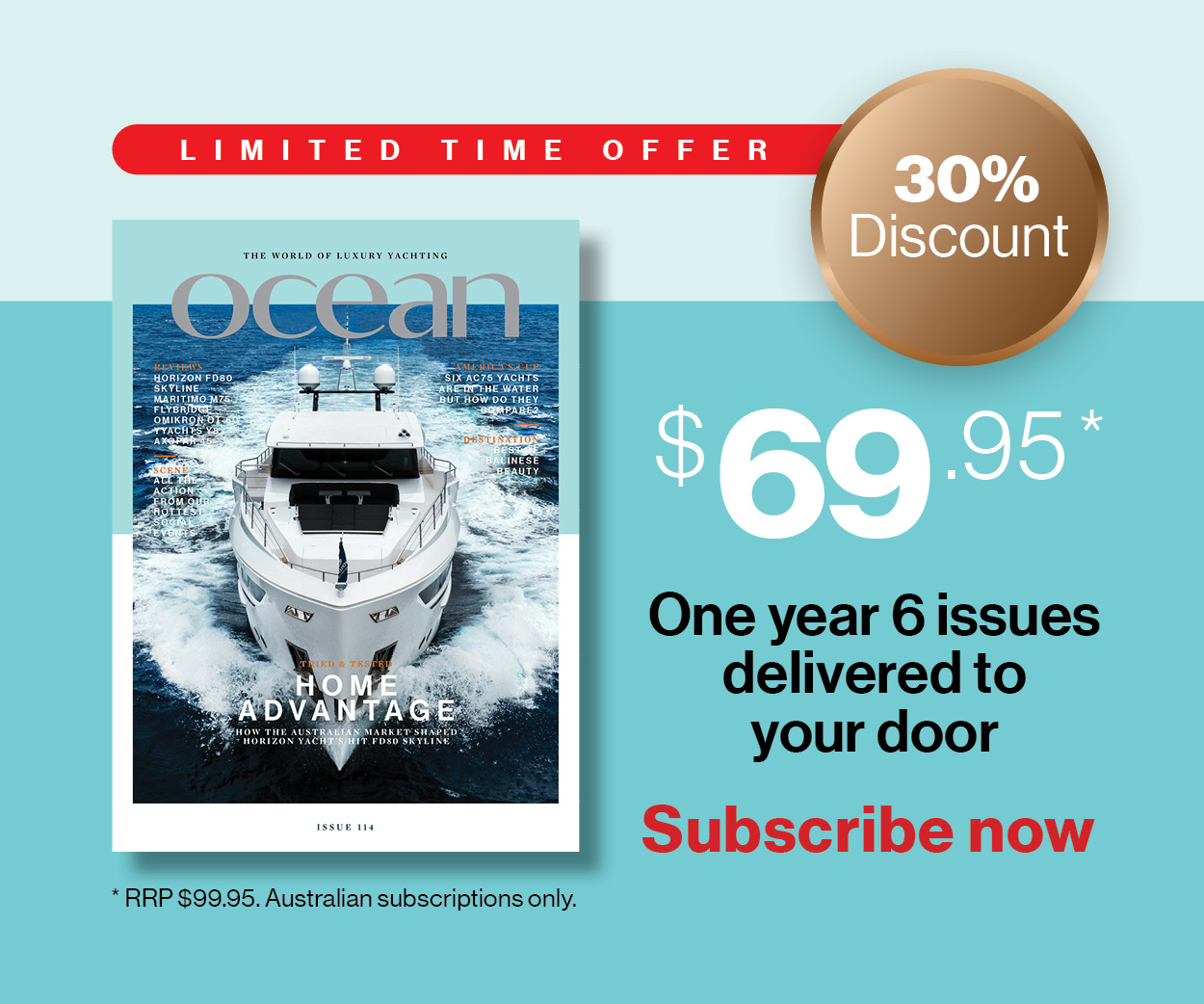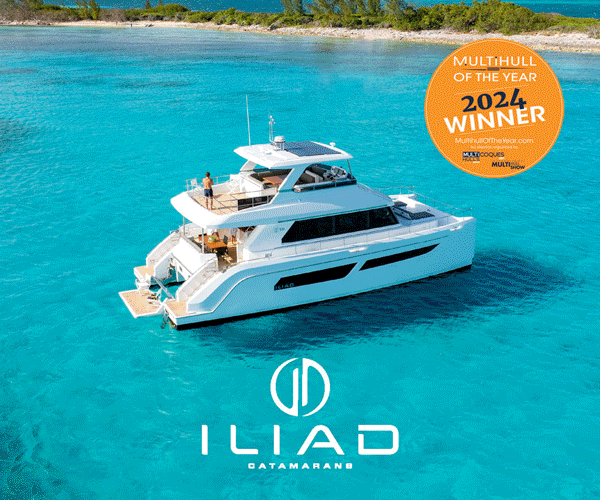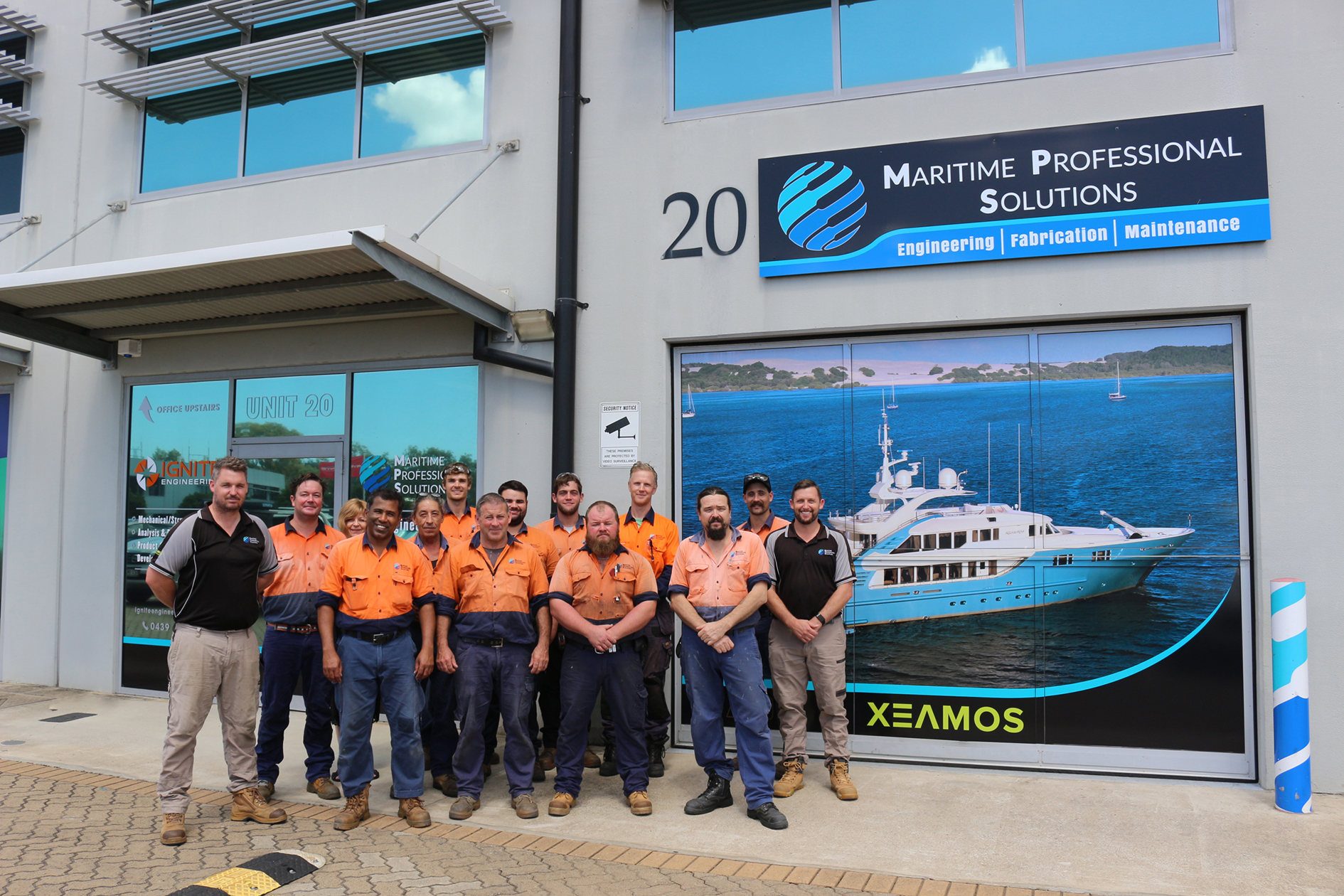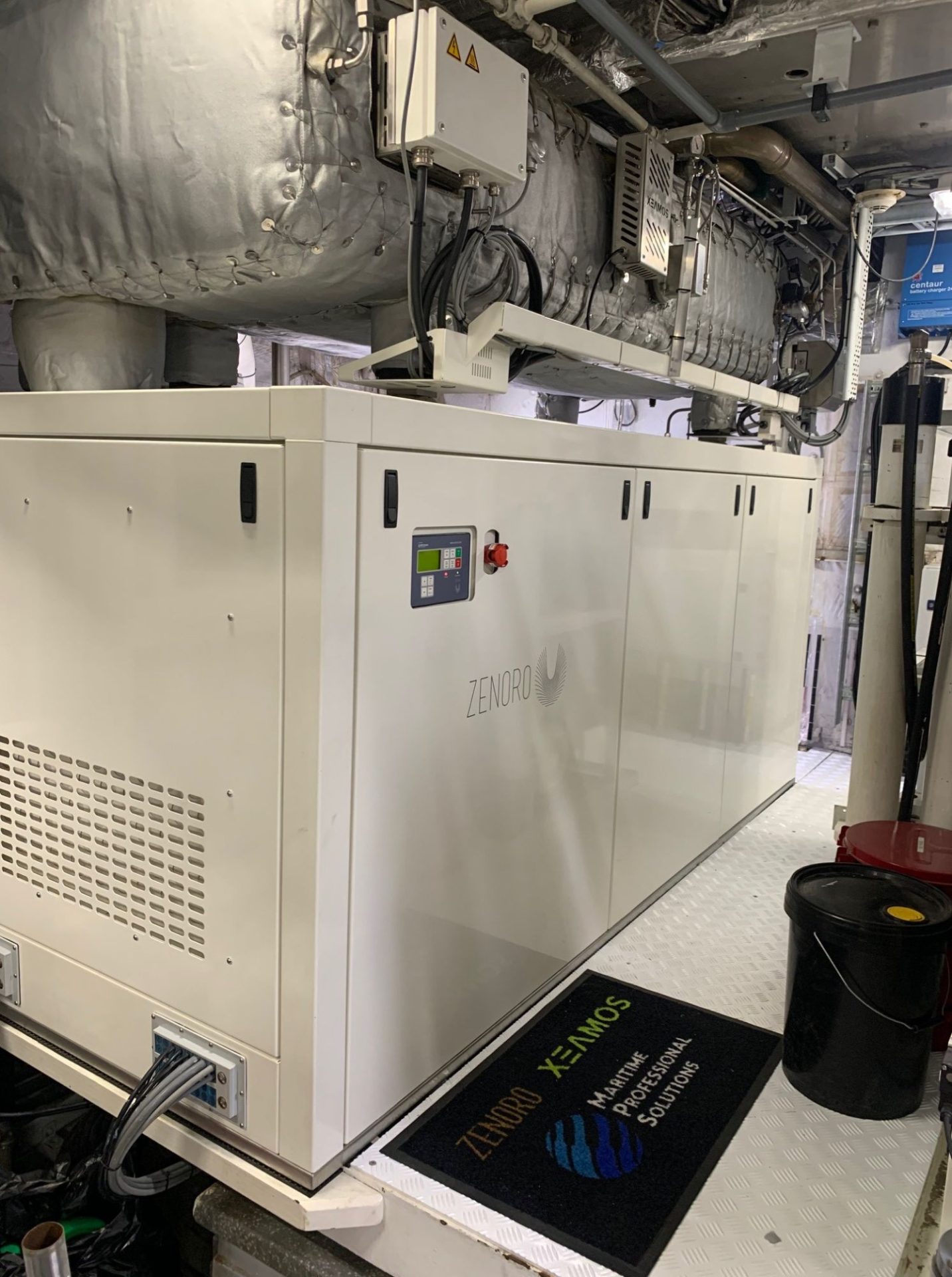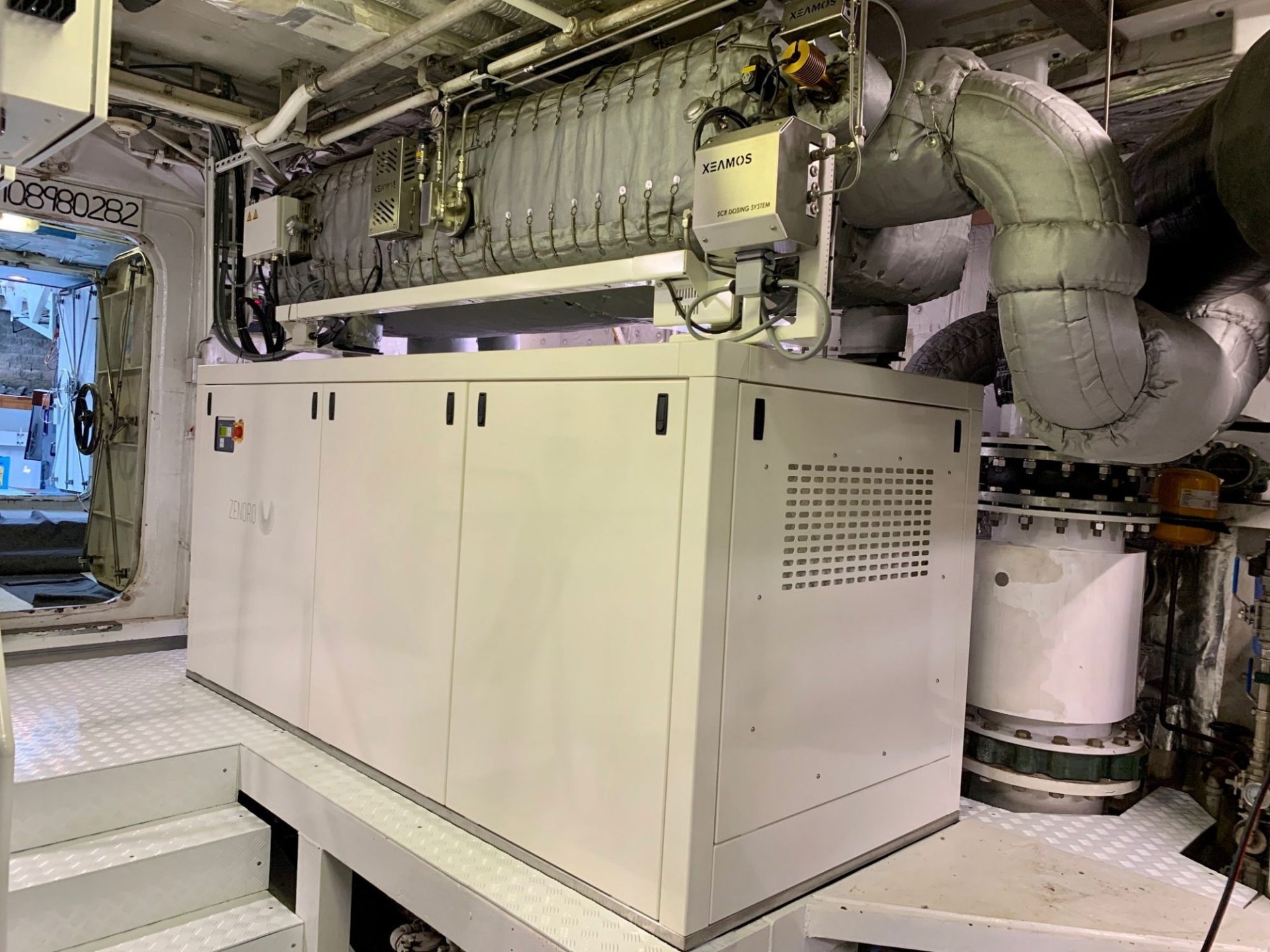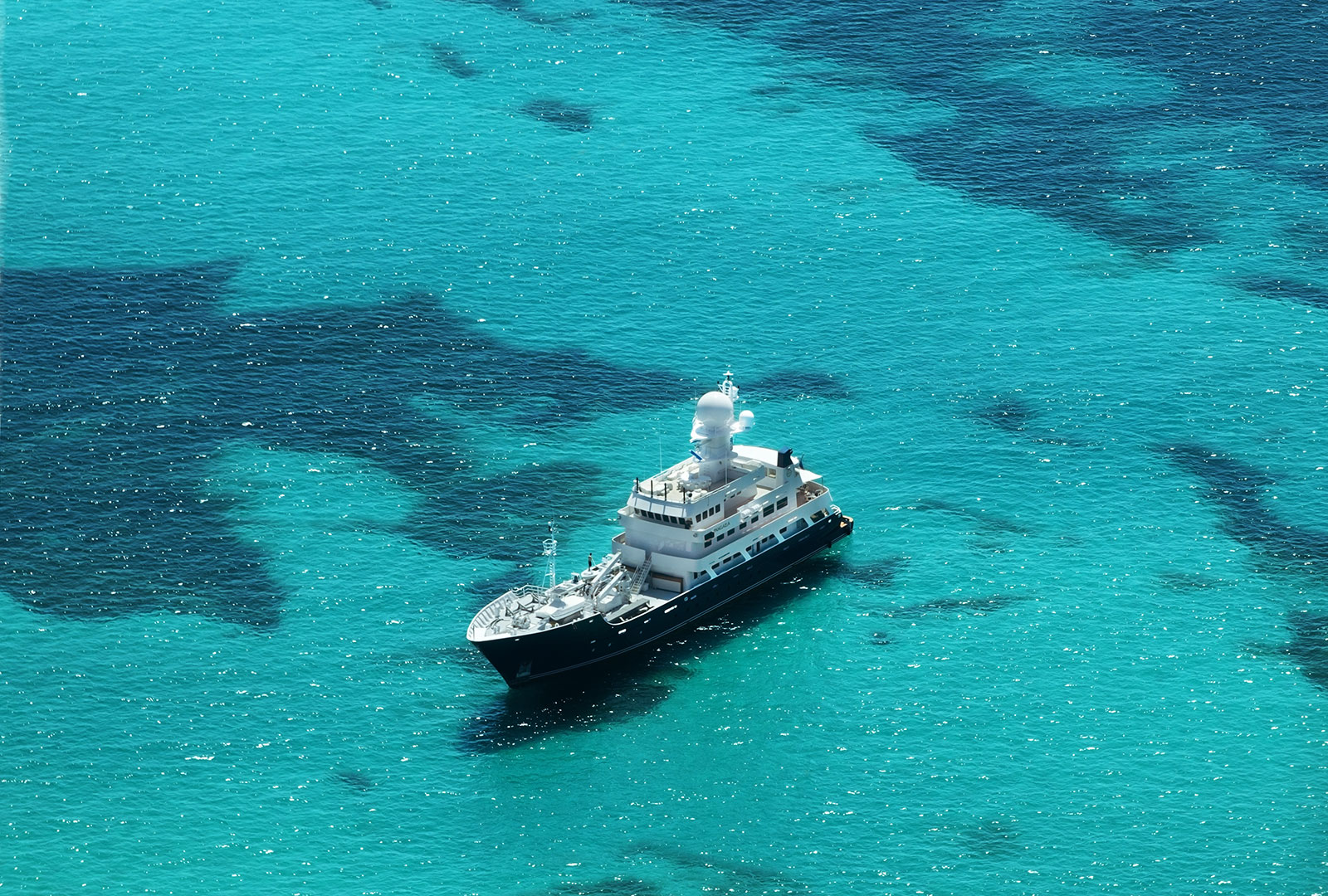Clean power
Maritime Professional Solutions, based at Rivergate Marina & Shipyard, undertook an Australian-first IMO Tier III generator installation aboard the high-tech scientific research vessel Pangaea.
05 March 2021
Maritime Professional Solutions, based at Rivergate Marina and Shipyard, has accomplished an Australian-first project, installing an IMO Tier III generator aboard the high-tech scientific research vessel Pangaea.
The installation was part of a massive refit project that took over three months to complete and included two new Zenoro 200 kW main generators and Xeamos IMO Tier III compliant exhaust after-treatment systems with Diesel Particulate Filters (DPFs) and Selective Catalytic Reduction (SCR).
Also installed was a new 96 kW emergency generator and Hamann sewage treatment plant, among a lengthy list of improvements to the vessel’s systems, which involved around 80 marine trade professionals during Pangaea’s refit.
MPS Directors Joel Allingham and Dan Fodie, who combined have 40 years of marine engineering experience, oversaw their team of 17 marine trade experts, comprising fitters and turners, specialist pipe welders, aluminium, steel and stainless steel fabricators.
“The Zenoro generator systems power the entire vessel and really are the beating heart of the ship,” said Allingham.
“Therefore, it is important to have the highest quality and most reliable systems in place. The installation was the starting point for the modernisation and ongoing improvement of the engine room.”
Zenoro is one of the world’s leading providers of custom superyacht generators. Their collaboration with Xeamos exhaust treatment systems made it the logical turnkey solution to develop high-quality generator systems that meet International Maritime Organisation Tier III requirements for emissions.
As Allingham explains: “In 2016, IMO Tier III requirements came into effect. This means any new builds or generator refits are required to meet IMO Tier III requirements if the vessel wishes to enter any of the IMO Emission Control Areas, which includes areas in the North American Pacific and Atlantic Coasts, Hawaii, Canada, the Caribbean, Baltic and North Seas and the Mediterranean Sea.
“These requirements are met by the installation of exhaust after-treatment systems that incorporate SCR (Selective Catalytic Reduction). The Zenoro generators that were installed in Pangaea were equipped with Xeamos exhaust treatment systems that included SCR.”
Quiet and clean power generation is not just driven by legislation, but also by owners’ and the industry’s appetite for a cleaner and healthier environment.
Pangaea is a state-of-the-art deep-water marine research vessel. Objectives are to undertake a variety of scientific projects as part of their Flourishing Ocean program, which aims to “engage the best science and latest technologies to halt damage and support initiatives toward its recovery.”
This explorer vessel and its crew are committed to finding strategies that will address overfishing, plastic pollution, rising sea temperatures and CO2 levels, the sustainable use of ocean resources and conservation of key habitats.
Pangaea features high-tech gear including a dive set-up, underwater drones, water sampling equipment and a broadcast suite. Other than navy vessels, few vessels possess this array of technology.
There were several challenges impacting this ground-breaking installation, but the main issue was space in the engine room. “The owner wanted the installation to be as neat as possible while maintaining serviceability and functionality,” Allingham recounts.
“With the inclusion of the Tier III exhaust treatment system, the overall unit size increases. The dimensions of the generators once assembled were 2850 millimetres long x 2100 millimetres high x 1210 millimetres wide.
“To ensure everything would fit without major modifications to the base structure and engine room layout, we made a 3D model of the engine room and the proposed installation so that the customer could see the final installation and make any required changes or requests prior to the installation commencing.”
Once the go-ahead was given, the team from MPS had to disassemble the generators into sections to allow the machinery to be installed through the aft engine room door, which was only 800 millimetres wide.
“Custom girder trolleys and a gantry system had to be designed, manufactured, and installed into the engine room to allow the machinery to be moved around the machinery space. To add to the complexity, the works were all carried out in water, so everything was transported and lifted onto the vessel by way of barge crane.”
The other major challenge was COVID-19 travel restrictions precluding the Zenoro commissioning engineers in the Netherlands from coming to Australia. Instead, remote commissioning was undertaken – a first for both Zenoro and Xeamos.
IT systems were implemented, which allowed remote access to monitor and control the generators and exhaust treatment systems, live camera feeds of the machinery space were set up, and direct communication between the technicians on site and the commissioning engineers in the Netherlands was available.
The remote commissioning was such a success, it was recently carried out for the installation of Zenoro generators on another motor yacht currently at Rivergate in January 2021.
COVID-19 protocols on site at Rivergate added yet another layer to the installation, and all personnel involved on the project were required to wear PPE, which was disposed of after each shift, and observe distancing and submit health reports each day.
Available in a range spanning 55 ekW/50 HZ up to 760 ekW/60 HZ, Zenoro generators are dedicated to delivering reliable power on board luxury yachts.
The complex scope of works undertaken on Pangaea impacted most of the vessel’s systems, covering engineering, fabrication, painting, electronics installation and plumbing under the direction of Rivergate’s Project Management Team.
In addition to the new generators, Kongsberg Multibeam sonar systems were installed to allow crew to perform hydrographic surveys in shallow waters or deep-water trenches, along with a gondola fixed in the underside of the hull which will be used in deep-sea observation and data collection.
“This project had multiple works fronts of complex nature under way concurrently,” observes Joel.
“The management of this by the Rivergate team was impressive. Being a major part of the project was a pleasure and it was great to see such a fantastic outcome for the owner, management team and the crew.”


